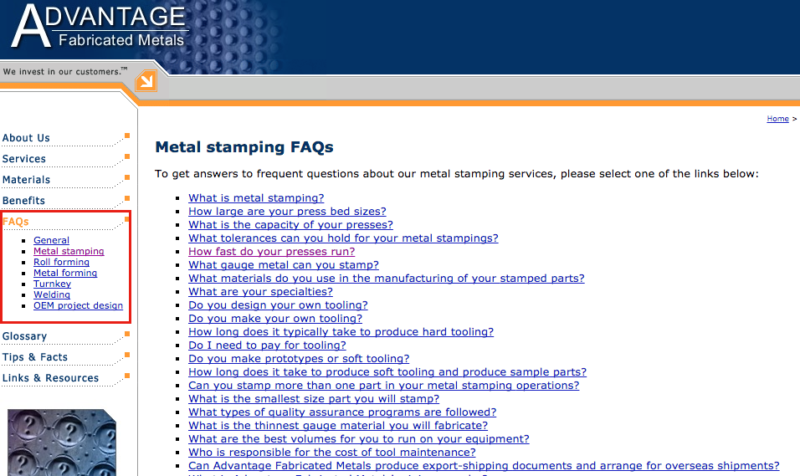 Creating useful and engaging content is an essential part of search engine optimization (SEO) and link building today.
Creating useful and engaging content is an essential part of search engine optimization (SEO) and link building today.
While it often feels fun and exciting in the beginning, it can quickly become a monotonous task that you dread. I mean, no matter how interesting a topic might be, can you really find a way to write something engaging that hasn’t already been written a thousand times?
You can, if you approach it with the proper perspective.
The problem is that your perspective is likely flawed because you, unlike many in your audience, are immersed in the topic on a daily basis.
The key is to get out and look at it from a fresh perspective. Forget what you know, and see it the way an outsider would.
Fortunately, that doesn’t require a concussion or mind-altering drugs. It just requires you to invest some time learning how outsiders think and talk about your industry, and, while there are a lot of tools designed specifically for compiling actionable keyword data, we’re going to look at a different approach today.
This is a more human approach that may turn up some opportunities other tools may miss.
This approach isn’t always as straightforward as others because you’re not necessarily digging up specific keywords to target. Instead, you will be looking at the thought process used by your audience and using it to create content that answers their questions and solves problems.
Let’s look at a number of places to find these new content ideas.
1. Quora

I’ll preface this section by saying I find Quora equal parts amusing, infuriating and insightful.
Amusing because of some of the ridiculous questions asked there, infuriating because of some of the answers provided by so-called “experts” and insightful because it enables us to understand the thought processes of people who are looking for answers on a particular topic.
The latter can be a virtual goldmine in terms of coming up with new content ideas because these people often have an entirely different perspective than we do.

As either a professional in your industry or an SEO practitioner producing content for clients, you generally understand a particular topic at a deeper level than the average customer in that industry. While that offers many clear benefits, it also sometimes blinds us to tremendous opportunities to produce content that engages our target audience.
Gathering this data is as simple as conducting a search on Quora. Unfortunately, there’s no way to export the data the way you could with a tool that was developed for this purpose. Simply copying and pasting it will generally make quite a mess that will either create a document with loads of tags you’ll need to strip out or it will push all of the questions together into a single paragraph, depending on how you do it.
Fortunately, I have developed a pretty slick and efficient way to gather as many of these questions as you want without a lot of added work, which I’ll demonstrate in the video below.
2. Facebook/LinkedIn groups
Both Facebook and LinkedIn groups tend to earn jealousy-inspiring engagement, which comes in the form of questions and answers. This is valuable because it helps you to see how other people — both customers and industry professionals — think about a particular topic.

There is no easy way to compile this data, though. You’ll simply need to stay on top of the posts and comments on those posts, then copy and paste the questions, topics and ideas that seem valuable to you.
I recommend finding a few large, well-established groups in your niche and actively participating in them. This serves two purposes:
- It gives you access to valuable new content ideas.
- It helps to establish you as an expert in that niche.
Starting your own group on Facebook or LinkedIn certainly can be worthwhile because it enables you to set your own rules that give you a competitive advantage. However, I don’t recommend doing that until you’re well-established in your niche and have enough time to dedicate to this labor-intensive task. Stick to existing groups for now.
These groups provide an added benefit of helping to nurture valuable relationships that can be leveraged for your link-building efforts.
3. Comment sections
It’s a well-known fact that the comment sections of many websites have become a toxic wasteland of spam and vitriol, which is why so many have removed them entirely. But if you can find a website that still allows comments and has an engaged audience, you may be able to unearth some amazing ideas for new content from the dialogue you find there.

I will warn you, though, after spending some time there, you’ll probably need a bath, a hug and a glass of your favorite alcoholic beverage.
4. Amazon bestseller lists

Writing a book requires a lot of work. I’m speaking from experience, as I’m halfway through writing my second book right now.
Because of the amount of work, most people don’t generally jump into the task without first conducting extensive due diligence. But I wouldn’t simply assume that a particular topic or angle mattered to your audience simply because someone wrote a book about it. Instead, I would dig deeper, looking for social proof, which provides hard data on whether it resonated with them.
The Amazon bestseller lists in your niche, or in some cases, even in other niches, is a good starting point. It’s common knowledge that it’s fairly easy to game these lists, especially in certain niches; however, placement generally indicates at least a certain number of actual sales of a particular book. Your next step is to evaluate the reviews for that book to see if they appear natural and authentic. You’re looking for a few things here:
- Are the reviews mostly from verified purchasers of the book?
- Do they seem to be spread out across a range of time, or do the reviews seem to be posted around the same time?
- Do they offer substantive insight or something closer to blog comment spam, saying things like “This was a great book! I will definitely recommend it to my friends?”
Once you’ve found one or more books that meet these criteria, buy and read (or listen to) them, taking notes along the way. You can then either expand on or refute the points made by the authors, being sure to cite them as your inspiration.
It might seem like that would detract from your credibility as an expert, but in reality, it actually bolsters it because it demonstrates confidence and humility. Besides, it’s the right thing to do. Plus, if you let the author know that they’ve inspired you to write a particular piece of content — even if it contradicts their opinion — they will likely share it on social media, and they might even link to it.
5. Frequently asked questions (FAQ)
Think of the questions you are frequently asked, and use that as a foundation to develop engaging content.

Advantage Fabricated Metals, FAQs
Most people compile this list based on feedback from their sales team, which is a great start, but that’s only scratching the surface. What I’ve found to work particularly well is to have each customer-facing staff member compile a list of questions they are frequently asked. Think of all of the other staff who may interact with customers, which might include staff in:
- Customer service.
- Marketing.
- Shipping.
- Legal.
- Accounts receivable.
Don’t stop there though — reach out to existing customers through email, social media, and even phone, to find out what questions they have about your products, services, company and industry. You may have to do some probing, though, since most people won’t admit that they don’t know something until you dig it out of them.
In many cases, it may make sense to evaluate the FAQs on competitors’ websites, too.
Once you’ve compiled a comprehensive list from all sources, merge any duplicate or very similar questions, and use them to begin creating outlines for new content.
How Google and other search engines treat content has changed over the years, and as a result, your tactics for creating it should have changed as well.
Topics vs. keywords
Most experienced SEO practitioners today realize creating individual pages or posts for each keyword phrase is an outdated and ineffective tactic. Targeting broader topics is a far more effective approach.
So instead of creating a page or post for each individual question, some of which may only require a brief answer, I generally recommend creating it based on a slightly broader topic in which you can include answers to several highly relevant questions.
This enables you to create a more valuable resource because rather than simply answering one question, it may answer several additional questions that a typical visitor may have after finding the initial answer they were looking for. The key is keeping your content topical and highly relevant.
Let’s use a home builder’s website as an example. Most of their customers will want to know how long the construction process takes. For the sake of this example, let’s say the answer to that question is 12 months. Unfortunately, that on its own doesn’t make for a very substantive or engaging piece of content. However, by incorporating certain highly relevant topics into that page, it can become both substantive and engaging.
So what other information might be worth including on a page answering the question, “How long does it take to build a house?”
- How local weather might affect the final completion date.
- Any paperwork that may be necessary to begin and/or complete various stages of the construction process.
- Expectations the builder has of the home buyer that will impact the final completion date, such as responding within a certain time frame or making site visits according to a particular schedule.
- The impact of change orders on the final completion date.
- How long permitting and inspections usually take and what variables might affect that.
- How certain materials or construction techniques might impact the final completion date.
As you can see, there are plenty of tangential but highly relevant questions that can be included with the core topic. By taking this approach, you’ll increase the overall quality of your website in the eyes of both search engines and visitors.
Making it valuable and engaging
You can make that piece of content even more valuable by including a hyperlinked table of contents, images, documents, internal links to sections on that page, pages within your website and links to other off-site resources. (In the previous example, that might include the local building department, zoning regulations, and property appraiser’s office.)
I also want to emphasize the importance of using proper semantic markup. This helps search engines to clearly understand the content on that page, as well as the relationship of any portion of that content to any other portion on that page. This includes the proper use of heading tags, structured data, ordered and unordered lists and image alt attributes.
Learning how to make it better
Once your content starts delivering leads, your staff will have the opportunity to make notes of the challenges they run into when closing new business. These notes will enable you to further improve that content to more thoroughly answer the questions visitors may have on a particular topic.
Over time, you’ll often find that you need to add more information, whether new or updated, and in some cases, you may find you’ll need to remove some outdated information.
In all cases, the content you create will be a constantly evolving and must adapt to the needs, knowledge and preferences of your audience as well as your SEO and link-building goals.
The post Where to find ideas for content your audience will love, look at and link to appeared first on Search Engine Land.
from SEO Rank Video Blog https://ift.tt/2HRd4T2
via IFTTT
No comments:
Post a Comment